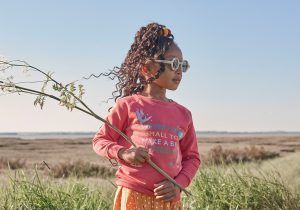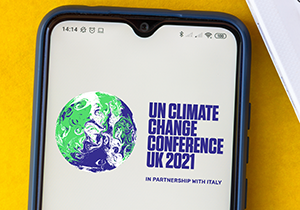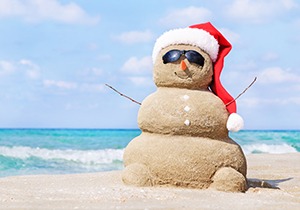
British Isles primary resource
Discover the animals that are native to the British Isles
This primary resource explores the different wildlife, habitats and landmarks of Scotland, England, Wales and Ireland. Discover which animals are native to the British Isles. Where are red squirrels thriving? Which animals are native only to England and Wales? What can you find at the Brecon Beacons National Park?
Pupils will learn about the unique environments of the British Isles and how they support local wildlife in our National Geographic Kids’ Animals and Geography primary resource sheet.
The teaching resource can be used in study group tasks for discussing the features of each country; as a printed handout for each pupil to review and annotate, or for display on the interactive whiteboard using the images and information included in the resource for class discussion.
Activity: Pupils could discuss, as a class, what they know about the different countries of the British Isles and which they have visited. Ask the children to choose one of the countries and make a poster about its wildlife using the information provided on the resource sheet and their own research. They could embellish the poster with symbols and icons of their chosen country. Pupils could imagine they are sending a postcard from the British Isles to somewhere else in the world, describing what they can see and hear.
N.B. The following information for mapping the resource documents to the school curriculum is specifically tailored to the English National Curriculum and Scottish Curriculum for Excellence. We are currently working to bring specifically tailored curriculum resource links for our other territories; including South Africa, Australia and New Zealand. If you have any queries about our upcoming curriculum resource links, please email: schools@ngkids.co.uk
This British Isles primary resource assists with teaching the following Key Stage 1 Science (Year 1) objectives from the National Curriculum:
Pupils should be taught to:
- identify and name a variety of common animals including fish, amphibians, reptiles, birds and mammals
- identify and name a variety of common animals that are carnivores, herbivores and omnivores
- describe and compare the structure of a variety of common animals (fish, amphibians, reptiles, birds and mammals, including pets)
Pupils might work scientifically by: using their observations to compare and contrast animals at first hand or through videos and photographs, describing how they identify and group them; grouping animals according to what they eat; and using their senses to compare different textures, sounds and smells.
National Curriculum Key Stage 1 Science (Year 2) objective:
Pupils should be taught to:
- identify that most living things live in habitats to which they are suited and describe how different habitats provide for the basic needs of different kinds of animals and plants, and how they depend on each other
- identify and name a variety of plants and animals in their habitats, including micro- habitats
Pupils should be introduced to the idea that all living things have certain characteristics that are essential for keeping them alive and healthy. They should raise and answer questions that help them to become familiar with the life processes that are common to all living things.
Pupils should be introduced to the terms ‘habitat’ (a natural environment or home of a variety of plants and animals) and ‘micro-habitat’ (a very small habitat, for example for woodlice under stones, logs or leaf litter).
Pupils should compare animals in familiar habitats with animals found in less familiar habitats, for example, on the seashore, in woodland, in the ocean, in the rainforest.
National Curriculum Lower Key Stage 2 Science (Year 3) objective:
Pupils should be taught to:
- identify that animals, including humans, need the right types and amount of nutrition, and that they cannot make their own food; they get nutrition from what they eat
Pupils They might compare and contrast the diets of different animals (including their pets) and decide ways of grouping them according to what they eat. They might research different food groups and how they keep us healthy and design meals based on what they find out.
National Curriculum Lower Key Stage 2 Science (Year 4) objective:
Pupils should be taught to:
- recognise that living things can be grouped in a variety of ways
- recognise that environments can change and that this can sometimes pose dangers to living things
National Curriculum Upper Key Stage 2 Science (Year 5) objective:
Pupils should observe life-cycle changes in a variety of living things, for example, plants in the vegetable garden or flower border, and animals in the local environment. They should find out about the work of naturalists and animal behaviourists, for example, David Attenborough
This British Isles primary resource also assists with teaching the following Key Stage 1 Geography objectives from the National Curriculum:
- name, locate and identify characteristics of the four countries and capital cities of the United Kingdom and its surrounding seas
National Curriculum Key Stage 2 Geography objective:
Pupils should be taught to:
- name and locate counties and cities of the United Kingdom, geographical regions and their identifying human and physical characteristics, key topographical features (including hills, mountains, coasts and rivers), and land-use patterns; and understand how some of these aspects have changed over time
This British Isles primary resource assists with teaching the following Sciences Second level objectives from the Scottish Curriculum for Excellence:
- I can identify and classify examples of living things, past and present, to help me appreciate their diversity. I can relate physical and behavioural characteristics to their survival or extinction.
- I can use my knowledge of the interactions and energy flow between plants and animals in ecosystems, food chains and webs. I have contributed to the design or conservation of a wildlife area.
Scottish Curriculum for Excellence Third level Sciences objectives:
- I can sample and identify living things from different habitats to compare their biodiversity and can suggest reasons for their distribution.
Scottish Curriculum for Excellence Fourth level Sciences objectives:
I understand how animal and plant species depend on each other and how living things are adapted for survival. I can predict the impact of population growth and natural hazards on biodiversity.
This British Isles primary resource assists with teaching the following Social Studies Second level objective from the Scottish Curriculum for Excellence:
- By comparing my local area with a contrasting area outwith Britain, I can investigate the main features of weather and climate, discussing the impact on living things.
Scottish Curriculum for Excellence Third level Social Studies objective:
- Having investigated processes which form and shape landscapes, I can explain their impact on selected landscapes in Scotland, Europe and beyond.
- I can investigate the climate, physical features and living things of a natural environment different from my own and explain their interrelationship.
Download primary resource
More Like

KOOKOO
BUT KIND

What is COP26?

Discover the secrets of beautiful handwriting!









LEAVE A COMMENT
THANK YOU
Your comment will be checked and approved shortly.
WELL DONE,
YOUR COMMENT
HAS BEEN ADDED!
COMMENTS
CUSTOMIZE YOUR AVATAR